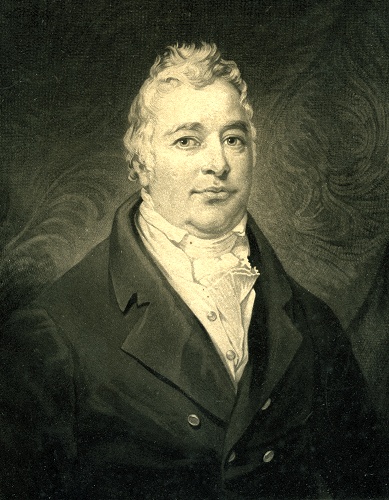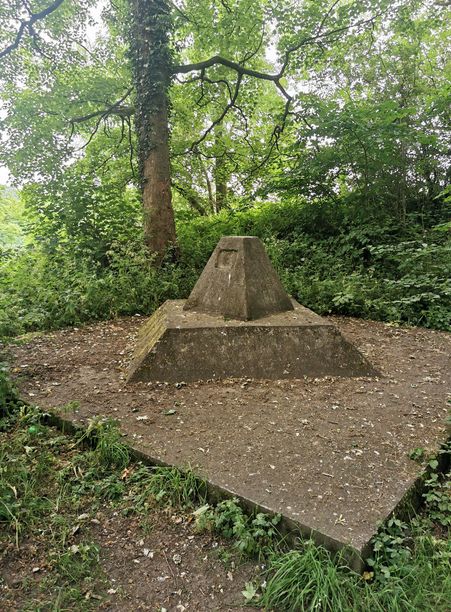
Samuel Oldknow was a man of many parts — entrepreneur, industrialist, agriculturist, architect, coal miner. Coal miner? Well, perhaps coal mine owner might be a more accurate description.
In 1793 when Mellor Mill was complete and beginning to produce spun cotton, Samuel turned some of his energy towards his next project. He was already a shareholder in the Peak Forest Canal Company as he had seen the benefits the canal could bring to Mellor Mill and he took advantage of this by building his own warehouse on the canal at Lock Nine. However, as he well knew, the main purpose of the canal was to bring limestone from the Peak District to areas where it could be used for agriculture or, especially, for construction.
The obvious next step was to participate in this burgeoning industry and to build his own lime kilns. This he did but they were not just any lime kiln. The site had been carefully chosen to make the operation as efficient as possible. By using the natural contours of the landscape, raw materials were delivered to the top of the kilns and the lime that was produced was taken out of the bottom of the kilns. It was then transported a short distance by a gravity powered railway to either a loading bay for carts or a loading bay for boats, both giving full protection against rain and wind. The kilns were close to the Peak Forest Canal but Oldknow ensured that there was minimal handling of the lime by constructing a short arm from the canal direct to the lime kilns.

The remains of Oldnow's Lime Kilns
But the kilns were not just technically advanced. Oldknow resolved to make them a thing of beauty as well, a building he could admire from his new home at Mellor Lodge. He specified a gothic-style structure to encase the actual kilns but, a businessman to the last, he also had living quarters built into the structure for use by some of the men that worked there. Although the lime making process was relatively self-contained it did need 24-hour supervision and this accommodation allowed them to be literally “on the job” at all times. As a bonus the working kilns provided free heating.
At the time the kiln The capped shaft at Picky Wood Pits were built coal was being mined at over 500 sites in Derbyshire including several local sites. Many of these were small, short-lived mines such as Brabins, Bore Lane and Longhurst Lane but others were much more productive and lasted well into the nineteenth century such as Ernocroft, Compstall Bridge and Old Hall Wood. However, even if close to the lime kilns, they all needed to transport a heavy bulky product by cart over poor roads. Oldknow recognised the problem and, as soon as the upper level of the Peak Forest Canal was completed, he bought coal from mines at Hag Bank in Disley which were adjacent to the canal. Cheaper transport costs meant cheaper coal.
The capped shaft at Picky Wood Pits were built coal was being mined at over 500 sites in Derbyshire including several local sites. Many of these were small, short-lived mines such as Brabins, Bore Lane and Longhurst Lane but others were much more productive and lasted well into the nineteenth century such as Ernocroft, Compstall Bridge and Old Hall Wood. However, even if close to the lime kilns, they all needed to transport a heavy bulky product by cart over poor roads. Oldknow recognised the problem and, as soon as the upper level of the Peak Forest Canal was completed, he bought coal from mines at Hag Bank in Disley which were adjacent to the canal. Cheaper transport costs meant cheaper coal.
However, how much better if he could use his own coal in the kilns. No sooner said than done. We don’t know exactly when he opened three separate mines on his own land but it was soon after the start of production at the lime kilns. In short order he opened three mines, all on the west bank of the canal and all very close to the lime kilns. The most obvious one is Picky Wood Pit, close to Bridge 18 (Brick Bridge), and adjacent to the path leading up to All Saints’. Unusually for these small abandoned mines it has a large concrete capping as a result of a young boy falling down the shaft in the 1960s. To the south of this pit by a few hundred metres, is Arm Pit, so named because there was a very short arm of the canal leading directly to the mine and can still be seen today though very overgrown. The third pit is about two hundred yards north of Picky Wood Pitin Barn Field where Chapel House Farm stands.

A mine abandonment map showing what lies under your feet at the lime kilns.
All three of these pits accessed the Yard Seam of coal, slow-burning so particularly useful for fuelling kilns. They were also very close to the kilns so required minimal transport but all three were on the ‘wrong’ side of the canal. As a result the coal had to be brought out of the mine, loaded onto a barge, moved a few hundred metres along the canal and then unloaded at the kilns. How much better if canal transport could be done away with altogether. Eventually this obvious step was taken and the Peacock Pit was sunk in 1860 as near to the limeworks as possible and, most importantly, on the east side of the canal so there was no transfer from land to barge and vice versa. The other three pits were largely exhausted by this stage and were closed down. The Peacock Pit itself lasted for thirty years, finally closing in 1893 and the kilns themselves were closed less than a decade later.

